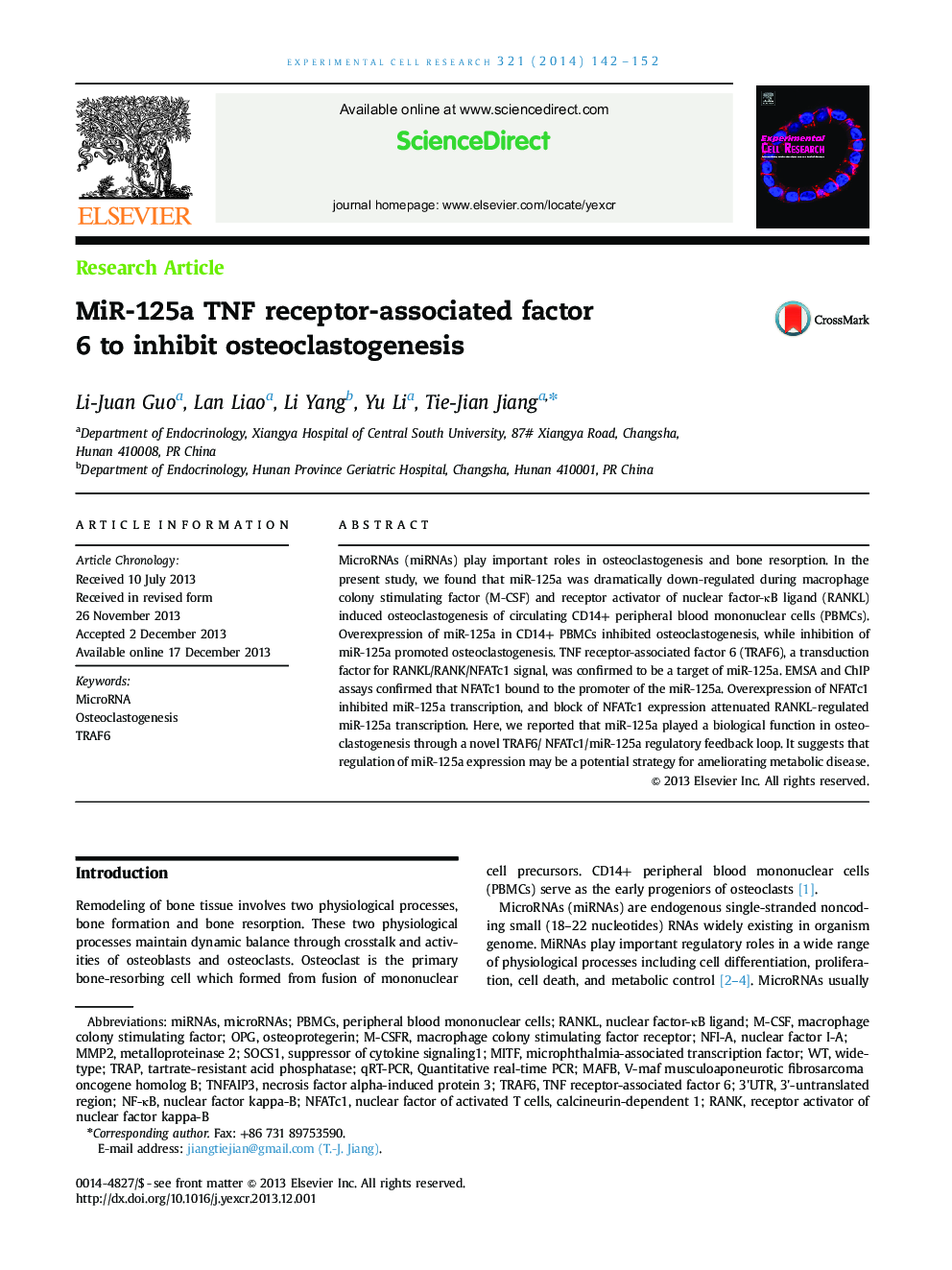| Article ID | Journal | Published Year | Pages | File Type |
|---|---|---|---|---|
| 2130360 | Experimental Cell Research | 2014 | 11 Pages |
•MiR-125a was significantly down-regulated in osteoclastogenesis of CD14+ PBMCs.•MiR-125a inhibited osteoclast differentiation by targeting TRAF6.•NFATc1 inhibited miR-125a transciption by binding to the promoter of miR-125a.•TRAF6/NFATc1 and miR-125a form a regulatory feedback loop in osteoclastogenesis.
MicroRNAs (miRNAs) play important roles in osteoclastogenesis and bone resorption. In the present study, we found that miR-125a was dramatically down-regulated during macrophage colony stimulating factor (M-CSF) and receptor activator of nuclear factor-κB ligand (RANKL) induced osteoclastogenesis of circulating CD14+ peripheral blood mononuclear cells (PBMCs). Overexpression of miR-125a in CD14+ PBMCs inhibited osteoclastogenesis, while inhibition of miR-125a promoted osteoclastogenesis. TNF receptor-associated factor 6 (TRAF6), a transduction factor for RANKL/RANK/NFATc1 signal, was confirmed to be a target of miR-125a. EMSA and ChIP assays confirmed that NFATc1 bound to the promoter of the miR-125a. Overexpression of NFATc1 inhibited miR-125a transcription, and block of NFATc1 expression attenuated RANKL-regulated miR-125a transcription. Here, we reported that miR-125a played a biological function in osteoclastogenesis through a novel TRAF6/ NFATc1/miR-125a regulatory feedback loop. It suggests that regulation of miR-125a expression may be a potential strategy for ameliorating metabolic disease.
